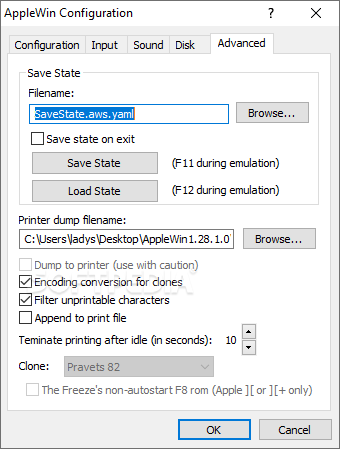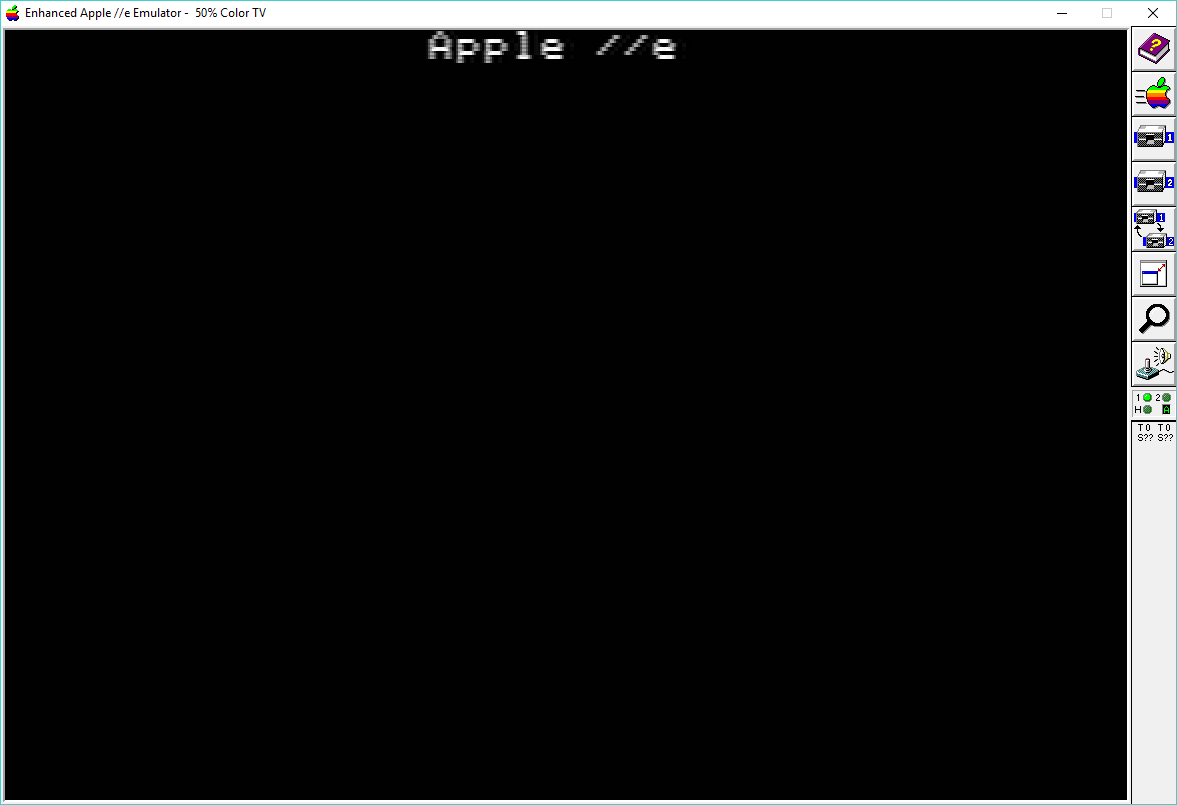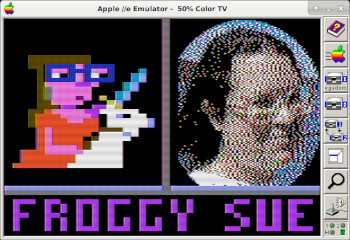

- #BASIC IN APPLEWIN INSTALL#
- #BASIC IN APPLEWIN SERIAL#
- #BASIC IN APPLEWIN FULL#
- #BASIC IN APPLEWIN SOFTWARE#
Below is the Koch Snowflake on the Apple screen.
#BASIC IN APPLEWIN INSTALL#
Apple II EmulatorsĪlthough I sold my Apple II+ many years ago, to buy an IBM AT clone, it turns out many people have put a lot of effort into writing Apple II emulators and that you can find an Apple II emulator on most systems, In this case I used the AppleWin emulator, which was easy to install and up and running in no time. The main challenge is what to do about the recursive function calls. Applesoft is a good candidate as it uses line numbers, has no structured programming, but it does have a handful of builtin graphics commands that allow us to write our Koch Snowflake program. I wondered about producing the same program on a more original version of BASIC. QB64 had functions, subroutines, structured programming and line numbers were optional. Last time I produced a Koch Snowflake in QB64, a version of BASIC more advanced than the early BASICs like on the PDP-11 or Apple II. This returned me to BASIC programming with Applesoft BASIC, which was created by Microsoft for Apple to replace their original Integer Basic. I joined the co-op program and after my first work term, used much of the money I made to buy an Apple II+ computer. Later we would receive back our punch cards along with any printout from the program.ĭefinitely a step backwards from the interactive programming on the PDP-11. Disk images may also be optionally "write protected" if they are mounted as "Read Only.After learning to program in high school in BASIC on a PDP-11, I went to University where first year computer science was taught using WATFIV (Waterloo Fortran IV), where we had to write our programs by hand, type them into an IBM card punch machine and then submit our stack of punch cards to the data center to run. WOZ filename extensions as Apple II disk image files along with reading disk images from compressed (.zip /. Supported disk images ĪppleWin supports ProDOS and DOS 3.3 disk image formats as well as copy-protected programs copied with "nibble copiers" to a disk image.

Features added to the latest versions of AppleWin include Ethernet support using Uthernet, Mockingboard and Phasor sound card support, SSI263 speech synthesis, hard drive disk images, save states, and taking screenshots.
#BASIC IN APPLEWIN FULL#
Full screen mode is available through the use of DirectX. AppleWin can also use the PC speaker to emulate the Apple II's sound if no sound card is available (does not work under NT-based Windows versions). Both 40-column and 80-column text is supported.ĪppleWin can emulate the Apple II joystick (using the PC's default controller), paddle controllers (using the computer mouse), and can also emulate the Apple II joystick using the PC keyboard.

AppleWin supports lo-res, hi-res, and double hi-res graphics modes and can emulate both color and monochrome Apple II monitors later versions of AppleWin also can emulate a television set used as a monitor.
#BASIC IN APPLEWIN SERIAL#
By default, AppleWin emulates the Extended Keyboard IIe (better known as the Platinum IIe) with built-in 80-column text support, 128 kilobytes of RAM, two 5¼-inch floppy disk drives, a joystick, a serial card and 65C02 CPU. AppleWin originally required a minimum Intel 486 CPU and is written in C++.ĪppleWin has support for most programs that could run either on the Apple II+ or the Apple IIe. Development of AppleWin passed to Oliver Schmidt and is now maintained by Tom Charlesworth. AppleWin was originally written by Mike O'Brien in 1994 O'Brien himself announced an early version of the emulator in April 1995 just before the release of Windows 95.
#BASIC IN APPLEWIN SOFTWARE#
AppleWin (also known as Apple //e Emulator for Windows) is an open source software emulator for running Apple II programs in Microsoft Windows.


 0 kommentar(er)
0 kommentar(er)
